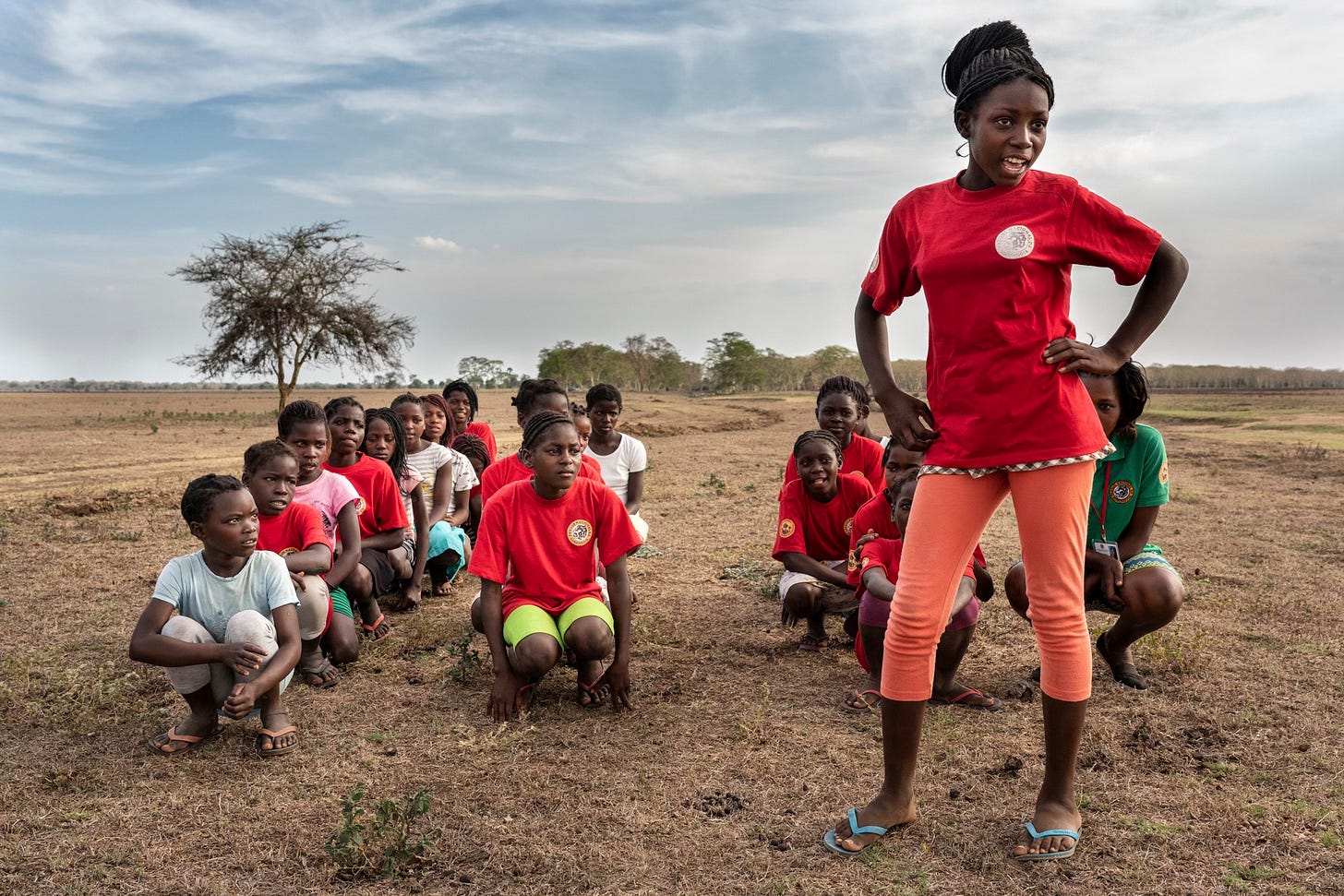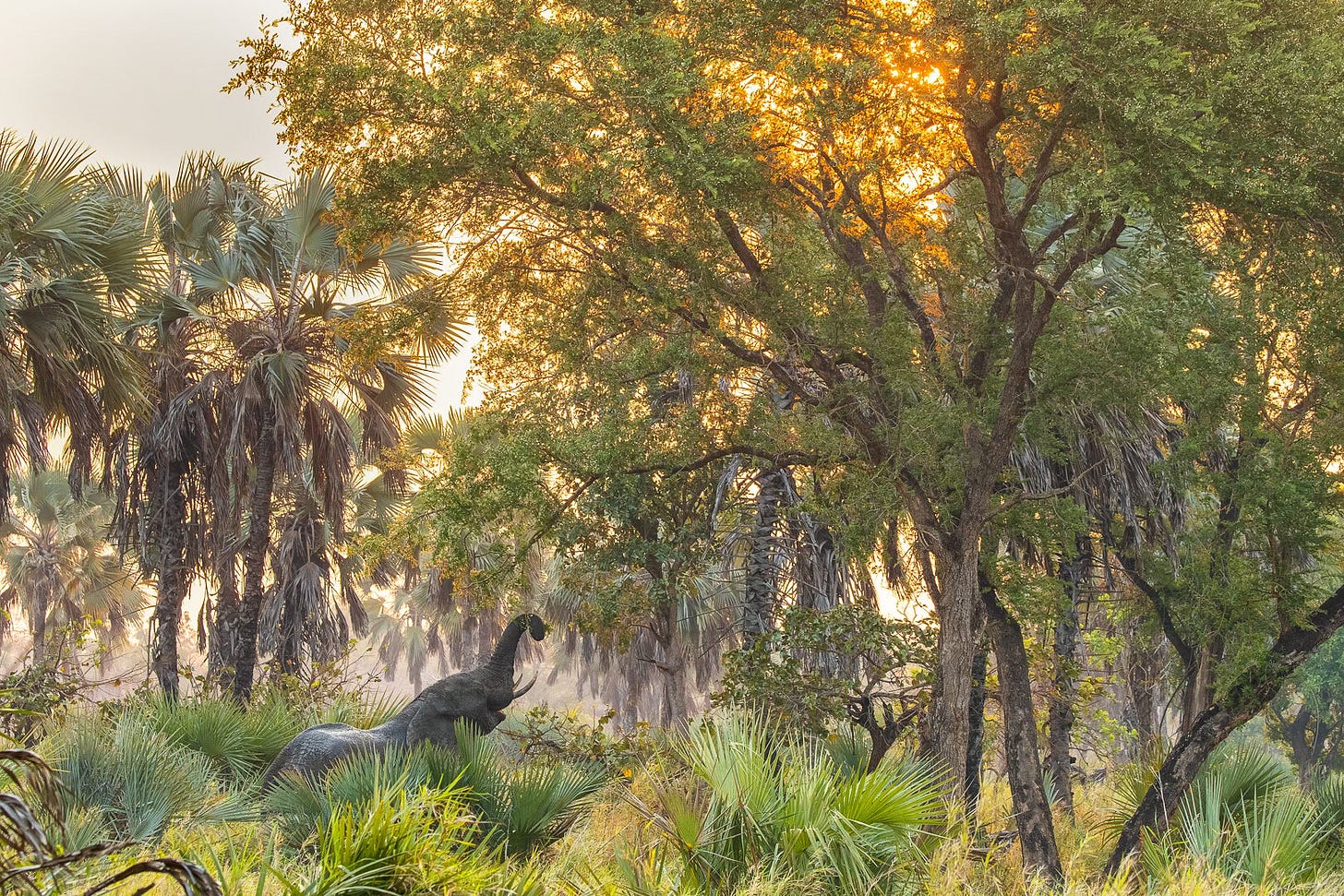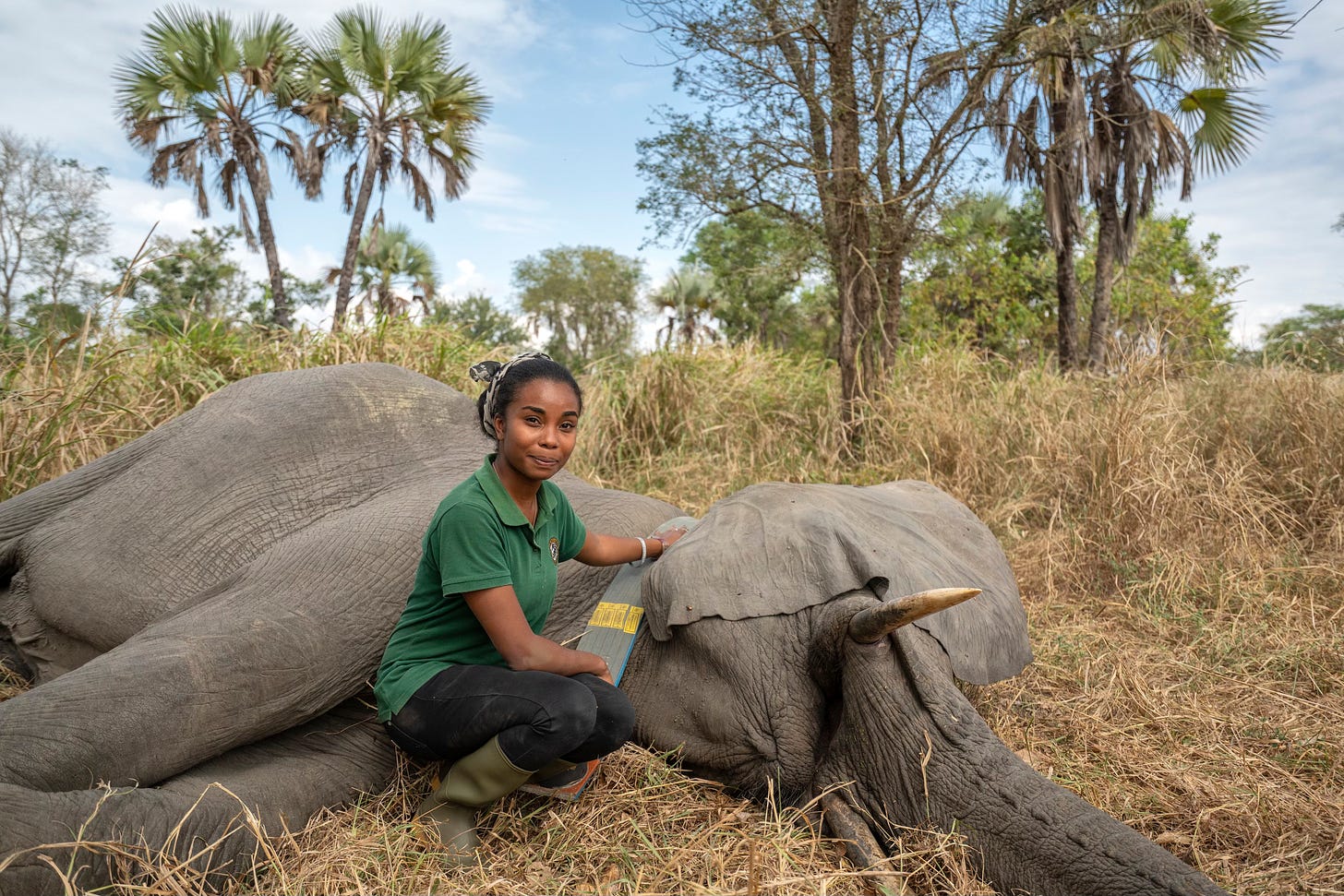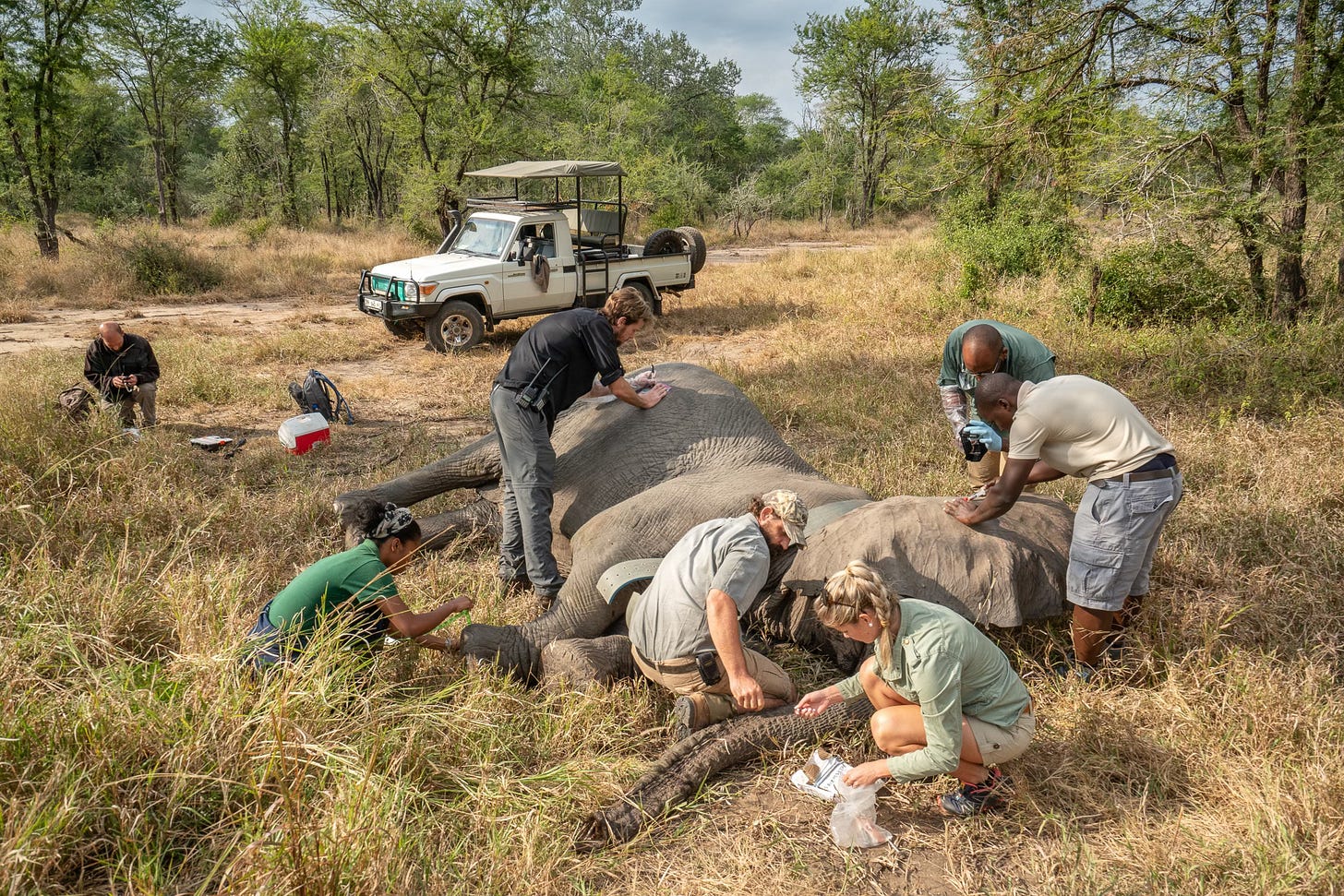For previous chapters click here
Girl’s Club and bush fires.
That evening Greg drove us out to the lake for sundowners, and we drank G&Ts with cool box ice on the bonnet of his Jeep while watching crocodiles with our binoculars. One of us spotted an apparently rare herd of wildebeest dotting a far ridgeline. By the time the lingering sun finally set, I’d fallen in love with the place.
I ended my marriage the following morning. It had long since collapsed, and I’d taken the coward’s way out and started an affair. The demands and pressures on me had simply become too many and too various. I was burned out and strung out from the road. Success hadn’t made me happy; it had just made me busy.
I was left squatting beneath the burden of my multiple failures: failure to be a good enough husband, failure to be a good father, failure to be a good photographer. In my relentless attempts to be there for everyone, I’d failed at all. Integrity is the rock I cling to. It helps me navigate the world. Having an affair had destroyed that and cast me adrift. I’d become rudderless and miserable. Eventually, my wall came down, the one that protects me when things get tough. Splitting up was just an exercise in enduring boring phone calls. I felt nothing but irritation as I destroyed the foundations of my life.
Gorongosa filled the gap where my emotion had been. I could get off the phone and within two minutes be driving down a dirt track surrounded by animals, then lose myself with a flask of coffee and a camera. Obsession is a wonderful foil, and photography is a particularly wonderful way of blocking out the world. Picking up a camera and driving off into the dust, to return a few hours later with something beautiful, some nugget of gold, is a highly addictive experience.
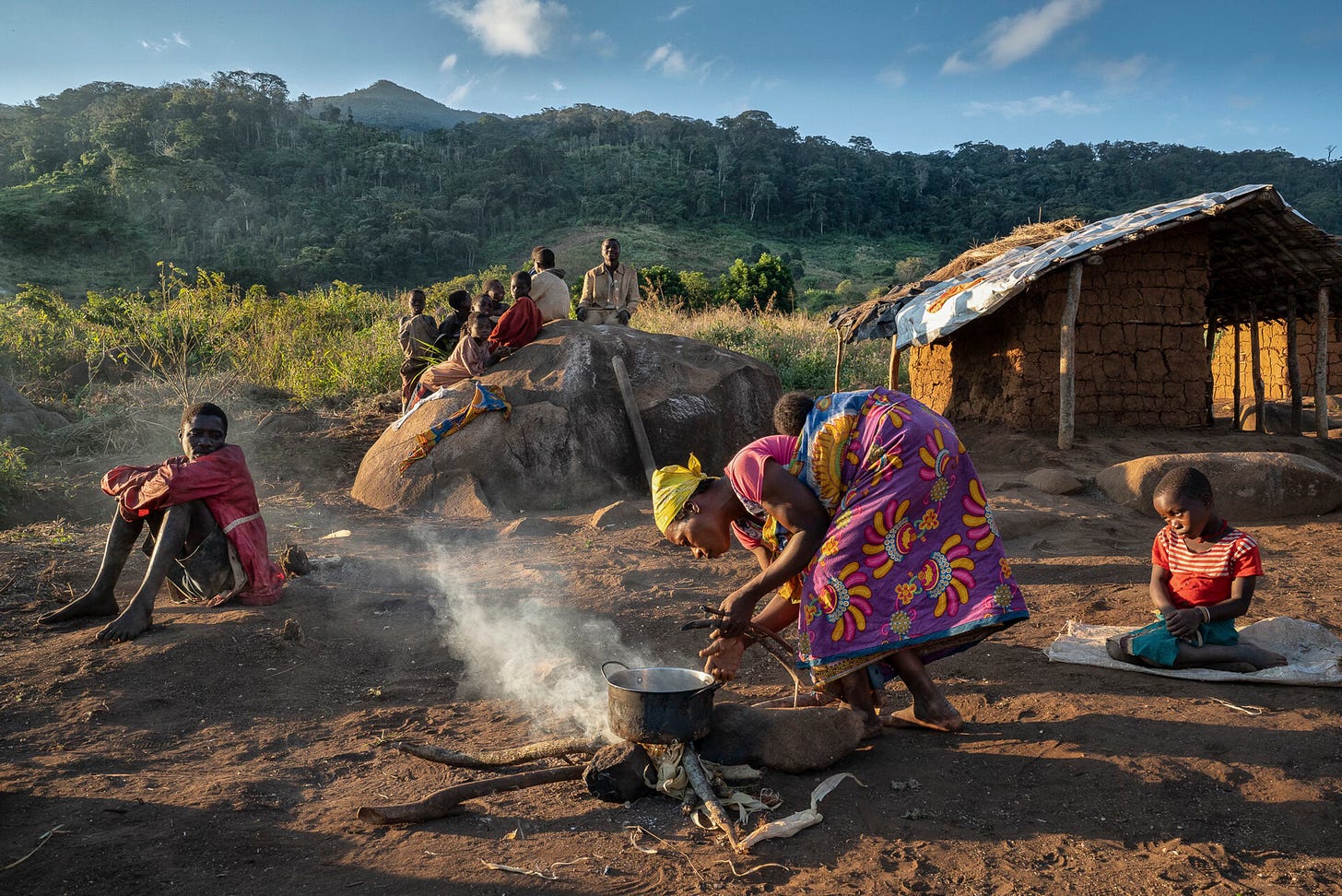
But good photography is about emotion. To create powerful, emotional images, without feeling anything yourself, takes considerable skill. To break something so ethereal down to a set of values and numbers is deeply cynical. It really helps to be able to feel to take good photos; emotion is pretty much everything, and without it a picture has no more depth than a slice of Dairylea. But I’d shut down my emotions for twenty years – a coping mechanism to a creeping burnout in both my personal life and my work. And you can’t just shut down one emotion; you can’t be picky. You shut down one, you shut down the whole damn lot.
Girls’ Clubs were one of the first and most important aspects of the story of Gorongosa, and they were one of the reasons I was excited by the assignment. I’d be shooting lions hunting in the morning and Girls’ Clubs in the afternoon – the contrast of subjects was enormously challenging. Prioritising women’s health through employment, healthcare and education was the central pillar of the park’s outreach into the buffer zone that surrounded the park, home to perhaps 100,000 people.
Concentrating on improving the lives of the women in this zone hugely benefited the community, as the population in the buffer zone couldn’t just keep growing unchecked. If it did it would result in increased poverty and pressure on the park that all the ranger patrols in the world wouldn’t be able to avert. The area was already significantly deforested, with most of the trees cut down and turned into charcoal, the forest being replaced by small tin-hut farms with exhausted, brittle maize crops where some of the world’s poorest people scratched an existence. To bring the population down to more sustainable levels meant giving women opportunities so they didn’t see their role as just squeezing out children from a young age. It meant empowerment, education, improved healthcare. It wasn’t an imposed solution, but it was a push, to bring the traditional large families down to two-child families.
The fifty or so Girls’ Clubs in the buffer zone provided daily extra-curricular sessions for the 2,000 or so girls that lived in the towns and villages around the park boundary. Jen and I attended several Girls’ Club sessions, which took place either before or after the half school day, and I shot pictures of the various lessons and activities. Some were visually boring, such as a bunch of girls watching a whiteboard and reading books. The dances were far more interesting, with the girls singing songs with lyrics about fertility and children’s rights, crucial and valuable life lessons in a community where some believed that you shouldn’t educate girls, because if you do they’ll become prostitutes.
The night before I’d left for Gorongosa I sat next to Sarah Leen at a National Geographic gala at our Washington HQ. Sarah was the head of photography back then and we’d got a little drunk together. We talked about the story, of course – you don’t work at National Geographic and not discuss work all the time. I told Sarah that the narrative had morphed since its inception. It had first of all been all about wildlife recovery, but was now a deeper story on conservation based on improving the health and education of women.
Sarah nearly spat her food out when I explained this to her. ‘Well, why the hell are we getting a man to shoot it?’ she fumed.
National Geographic at the time was going through a long-overdue moment of reckoning. The old boys club had had its fun for too long and there was a strong drive to change it, diversify the rolodex of old white guys to include many more women and ‘people of colour’, as they’re so clumsily called. The idea of getting a white guy to go to Africa to shoot a story on black women’s health unticked just about every box that National Geographic was scrambling to tick. Sarah wanted to drag me over to editor in chief Susan Goldberg, sitting on an adjacent table, to explain myself. I said that it wasn’t actually my fault. I hadn’t assigned the story to myself – they had. And with that Sarah eventually calmed down.
Sarah’s fear of me shooting the story, hinged, I suspect, on the increasingly influential concept of the ‘female gaze’ – the idea that women see the world in a different way to men, and therefore shoot it and present it differently. It’s an idea promoted to overcome narratives of patriarchy that persist in the way photographic subjects are approached. Personally, I think the idea is flawed, as privilege and ego are far greater drivers of subjective journalism than gender.
I concentrated my efforts covering the story on empowerment rather than victimhood. The picture we eventually ran fulfilled the subtext – it showed a group of girls dancing and clapping as they sang a song about HIV/AIDS. They’re happy, the sun is out, the girl who dominates the frame wears a T-shirt with a white, blonde American pop star on it, and she’s staring directly into the camera. The contrast of race is irrelevant – both girls look empowered, because, of course, they are.
On another occasion we accompanied Girls’ Club into the park, looking for lions. Most of the girls who crammed into the safari bus had never even been into the park before, and their only experience of the animals – their natural heritage – was from pictures in books. They were led by Gabbi, a brilliant trainee tour guide in her early twenties from the local town. We spent ages trying to find the girls a lion, which we eventually did, although it was hidden in some tall grass and disappointingly we had to move on without a proper sighting. The girls didn’t seem to care, though. They were happy with the thousands of other animals they did get to see.
After a long day on safari they all disembarked from the bus on the floodplain, and started dancing and singing against a backdrop of egret flocks and waterbuck herds. It seemed so absurd that the local kids had never been into the park, never seen a lion. The idea of educating local people for the purpose of conservation and asking them to care about their local natural heritage seemed completely ridiculous if they’d never even seen it. This is the case across so much of Africa, and it was so important to see the park addressing the anomaly.
The conservation of the park’s fauna was obviously a subject critical to the story. Despite experiencing an extraordinary recovery, the animal species were out of whack. A lack of predators, particularly leopards and hyenas, had led to an explosion in some species, specifically warthogs, impala and baboons. To address this, the park was conserving what they had – a healthy and growing lion population, up to perhaps two hundred individuals – and, critically, planning on reintroducing keystone predators. A few weeks before I arrived a pack of fifteen wild dogs had been transplanted from South Africa into an enclosure in the middle of the park, where they stayed for a few weeks to acclimatise before being released into the park.
Photographing them was a nightmare. Most mornings Jen and I would take a drive at dawn to shoot whatever we could find in the nice morning light, but always in the hope of finding the dogs. In the first month we saw them once, briefly, on the road by the airstrip. The photos were shit, though. We looked at their radio-collar data and saw that they were hanging out in the acacia forest most of the time, so our chances of finding them in among the tangle of thickets and trees were minimal. Then one morning at dawn we bumped into them out on the edge of the floodplain. They were harassing a mating pair of lions, who’d become distracted by them. The dogs ran at the lions, playfully provoking them, which irritated the shit out of the lions. Both the male and female made runs at them, but they looked large and cumbersome compared with the dodging speed and agility of the dogs. This interaction only lasted fifteen minutes or so, until the dogs got bored and headed out onto the floodplain.
We zoomed the car ahead of them to try to position them against the morning sun. I hopped out as we pulled up and sat low on the ground, propped against the side of the car, and started shooting. The light was pure magic gold and hazed out above the distant treeline. The playful rabble trotted straight towards the car, then stopped a few feet short of us and settled briefly, completely ignoring me, while I frantically rattled off a few frames. The image was beautiful. It relaxed me briefly as it let me off the hook; until, that is, I became obsessively consumed by the next image I decided to shoot.
After rounding the car they spotted a lone female bushbuck and almost immediately dropped low to a stalk, noses focused forward, and began a very swift approach, spanning out a little as they picked up pace. The bushbuck didn’t really react when it noticed the gang bearing down on her. She’d probably never seen a wild dog – the fact that a bushbuck, a creature that nervously stalks forest edges and ditches, was out on an open floodplain being, perhaps, proof of this. She turned and eventually broke into a sprint, but the dogs soon caught up with her and within a second she vanished beneath a scrum of excitedly wagging tails, big ears and gangly legs, to be revealed a moment later being ripped in half, her body literally exploding in a mess of blood and guts. By the time we caught up with the dogs, a couple were fighting over her head and a stem of vertebra that hung from it, already cleaned to bone, while others fought over her unborn calf.
The dogs seemed to target pregnant bushbuck and that morning killed five more – all of whom just stood there waiting to die as a mad rabble of Africa’s most efficient hunter ran them down.
Dominique Gonçalves’s work was crucial to the story of Gorongosa. She was a young PhD ecologist who acted as manager of the park’s 650 elephants. Dominique was very much part of Greg’s vision for a park run by young dynamic Mozambiqueans. Her main focus had been a DNA study of the park’s female elephants, some of whom were being born tuskless. The idea that elephants had evolved to not grow tusks, and were consequently less desirable to ivory poachers, was perhaps ludicrous considering the lifespans of elephants and the fact that evolution is apparently a generationally slow process. But whatever the scientists thought, it was happening and Dominique was investigating.
The survey required a week-long period of darting elephants from helicopters to collect samples and attaching GPRS-fitted collars to them so they could be continuously monitored as they moved in and out the park and the buffer zone. Pingo would be flying Dominique in Greg’s JetRanger, accompanied by an anaesthetist and Louis van Wyk, a South African wildlife-capture specialist whose job it was to lean precariously from the chopper and plant a dart into the female elephant of Dominique’s choosing.
To cover this conservation in action I hired a chopper from a nearby hunting concession. Its pilot was a young, very smooth South African called Dustin, who looked more like a surfer than a pilot. Accompanying us was David Quammen, a popular-science writer who’d once introduced me on stage as National Geographic’s answer to Russell Brand (that hasn’t aged well has it…). I was fond of David, despite his moustache. He was wise, fascinating and a generally calming presence. He’d worked all over the world, covering Ebola extensively, and we’d worked together on the Yellowstone story a couple of years earlier.
We spent our first morning following Pingo around as he and the crew searched for elephants in the sparse forests between Lake Urema and the Urema River. When they found a small herd of perhaps ten, they were straight in; Pingo dropped the chopper down to commence a low, fast sweep over them, and Louis darted with expert aim as the elephants ran towards the canopy for cover. Dustin and I muddled ourselves into a position to try and get a shot of Louis and the chopper, with the elephants all stacked up in the frame, but it took a few goes on a few different elephants before we figured out the choreography. The frame looked good but, meh, it wasn’t going to make the cut, so instead I concentrated more on what was taking place on the ground.
We’d all hover around in the air after the dart had gone in and wait for the elephant to drop. Timing was critical. Tenecus, the quiet and warm Mozambican anaesthetist, wanted to keep the elephant under for as short a time as possible due to the inherent risks that accompany anaesthetics. The team hadn’t lost an elephant yet, and didn’t plan to. The ground crew usually arrived as the elephant crumpled to the ground and would meet us out of the landing helicopters. I’d then shoot the collar being fitted and Dominique doing her sampling work, which involved detailed measurements, biopsies taken from the ears, extracting a few vials of blood and finally a faecal sample, which she collected from the rectum with an arm-length glove on. She clearly loved me laughing and taking photos of her grimacing as she searched for nuggets, armpit deep, somewhere seemingly towards the end of the elephant’s trunk. The whole operation would last no more than twenty-five minutes before Tenecus would reverse the anaesthetic and we’d all hang around watching for the elephant to wake up, before jumping in the cars and helicopters and getting the hell out of there.
On the second day Louis accidently brought down a young bull elephant instead of a female. After assembling on the ground and discovering this, Tenecus reversed the anaesthetic and we all stood around close to the choppers waiting for the elephant to wake up. After ten minutes it remained knocked out, so Tenecus administered another jab. Still the elephant didn’t wake.
‘Lift its ear off its eye,’ Louis shouted to Tenecus as he walked away from the elephant. Tenecus turned back and peeled the huge ear off the animal’s eye, revealing it to the sun. Within a few seconds the elephant started staggering to its feet. I shot photos of it as it stood dazed, staring at us, with one of the choppers hovering around behind it above the palms.
The following day Louis dropped a female in the middle of an extensive area of tall elephant grass. The rest of the herd, including her calf, ran off as she went down. We hovered for a while watching her until she seemed to be sleeping properly and advised the ground team where we were. They had a new driver and for some reason were struggling to find us. We gave them a few minutes, flying high so they could spot us, but they were too far off to see us. There wasn’t time to mess around, though, so Pingo dropped the helicopter into the tall grass a few yards from the elephant and the crew got to work, while I weaved around shooting pictures and David poked about asking questions.
Louis and Tenecus worked fast to attach a huge leather collar to the elephant while Dominique did her sampling work. The collar was a strip of very thick leather, attached with a bulky GPRS unit. The leather was so thick that Louis needed a large hacksaw to cut it, once he’d measured it around the elephant’s neck. It would then be attached with nuts, bolts and a spanner.
The ground crew, despite being in constant radio contact with Pingo, were still simply unable to find us. They’d tried to bash into the expanse of elephant grass, but it was impossible to see where we were, and the terrain was rutted and scattered with rocks and broken stumps of trees. Eventually Dustin fired up his helicopter, taking it upon himself to go and get the most vital members of the crew and bring the additional equipment needed to finish off the elephant work, which now had a growing sense of urgency about it as Tenecus wanted to bring the elephant round as soon as possible.
A few minutes later the chopper returned and Dustin dropped the crew off in the tall grass perhaps fifty yards away, before taking off again to get the others. A minute later, Pingo noticed a fire forming where Dustin had landed. He notified everyone calmly. Louis acknowledged it without too much concern as he straddled the elephant’s neck and heaved the collar around it. A minute later, the smoke had thickened and flickers of orange appeared licking above the tall grass. I wandered over to Pingo to ask what might have started the fire.
‘He landed an R44 in tall grass. The ass on that thing is low and gets very hot,’ he said. He looked concerned and got on the radio to Dustin as he appeared back in the sky, hovering high above the fire.
‘You need to go low and blow it out,’ Pingo shouted down the radio. I moved closer to the elephant with my camera as Dustin flew in low over the grass, placing the chopper directly over the flames. This set Pingo off shouting and cursing down his radio as Dustin unwittingly fanned the flames, whipping them up into an inferno.
Realising, with a sense of impending doom, that a huge pile of elephant dung was about to hit the fan, Tenecus shouted to Louis, ‘Shall we reverse her?’
‘Don’t be ridiculous,’ Louis barked back, as the collar was only half attached and needed a few more minutes work.
‘Come on, guys, speed this up!’ shouted Pingo. ‘I don’t want to panic you but the fire is coming this way,’ he said flatly. This set of a sudden sense of panic across the entire crew. I took my eyes from my viewfinder to see a terrifying crackling orange wall coming towards us, perhaps only thirty yards away. Louis and Tenecus began screaming at each other, with Tenecus still demanding to reverse the elephant and Louis stubbornly refusing to let him. But within just a few seconds the fight was over as the fire swept in on us. Pingo ran in with a tiny fire extinguisher he had in the chopper and we all ran around trying to find anything we could attack the flames with. Without the ground crew cars we had nothing – no water, no blankets, no machetes, nothing. Dominique began freaking out and shrieking as she realised that her worst nightmare was about to happen: we burn an elephant to death.
The last photo I took before I threw my camera away was of Dominique running around the elephant looking terrified, Louis and Tenecus speedily grabbing up their equipment, and Dustin’s chopper in the background above a plume of smoke and flames.
Then I got to work. Someone had a Swiss Army knife, so we took turns frantically cutting palm fronds off a few bushes and running into the fire as close as we could, burning our hair and faces, and fighting desperately to beat the flames down with the fronds. We were almost immediately forced back by the wall of heat, and to make matters worse the stalks of the palms were armed with vicious backwards-facing thorns, so our hands got shredded straight away and began bleeding down our wrists.
A sense of utter hopelessness spread rapidly as the flames reached the elephant, and most people ran off. Louis and I held out, though, beating the flames, while shielding our faces with our hands to protect against the burn. I stamped desperately around the elephant, leaping to where the fire was burning fastest and then leaping back again before I caught fire. The grass that encircled her had been flattened by the crew as they’d been doing their work, so the flames grew along the stems rather than burning straight up them. This slowed the fire down little and enabled me to briefly keep it at bay as I tap danced with firm stamps around the creature’s legs and trunk, beating out the fire before it reached her skin.
Pingo fired up his chopper, which slightly suppressed the fire, blowing it back on itself. As Louis finally ran off I could just about make out people yelling at me over the sound of the rotors, telling me to get out, but I ignored them.
‘She’s going to wake up,’ someone shouted. Tenecus must have reversed the anaesthetic, but she wasn’t moving. ‘
Get out of there!’ came more frantic cries. I carried on stamping the flames until I realised I’d lost, then made a run for it. But I noticed her ear was covering her eye, so I turned and quicky lifted it off.
I remember the thick, billowing smoke, and my hat flying off in the wind from the rotors then vanishing into the flames. I turned to see the elephant stand up as Pingo drifted the chopper towards her, forcing the dazed and confused animal through the flames and away from us. Pingo was smart – without the cars we had nowhere to hide and she could have come for us. There was silence among the crew as we watched. Louis and I were black with smoke, my hair and face burned, my arms bloody and the backs of my hands red and spotted with singed hairs. But now wasn’t the time for reflection. We had to get out of there.
Pingo came straight back for us, with Dustin dropping in beside him, and we all piled into the two helicopters and lifted off. As we rose up high over the savannah, it was like a scene from some Vietnam movie. Fire had fully engulfed the spot where the elephant had been lying only a couple of minutes earlier. The flames were huge, raging across an expanse of tall grass the size of a couple of football fields. Ten minutes later the whole expanse of grassland, perhaps a square mile, was gone.
Back at base, shell-shocked and upset, we all gathered for a debrief with senior staff members. Ultimately it was a terrible mistake, which I took full responsibility for as it was me who’d hired Dustin’s chopper. But there were no fingers pointed. It was a freak accident that had occurred with an extremely professional crew. I found Dominique a while later. She was almost unable to speak. I apologised profusely. She smiled and handed me my camera. I had no idea she had it. I’d just thrown it away and dived in.
I never did tell Sarah Leen, my boss back in DC, about the incident. Everyone advised me not to. The scene had been, in all its awfulness, the most photogenic thing I’d ever witnessed – a brilliant mix of fear and panic, high emotion, an elephant apparently dead on the floor, a helicopter in the sky and a wall of orange flame, and I hadn’t done my job and shot it. But I’ve got no regrets and I’d do the same again. There’s no point telling a story about elephant conservation if you’re going to stand around and watch one die.
Two days later the aircrew found the elephant with the collar dangling off her. They darted her and fitted the collar properly – she didn’t have a single burn on her.
In the next instalment I head to the Serengeti to cover the world’s greatest animal migration.






